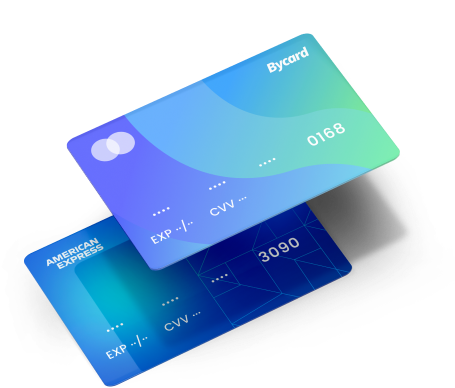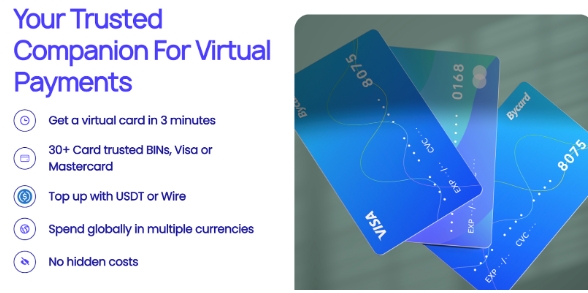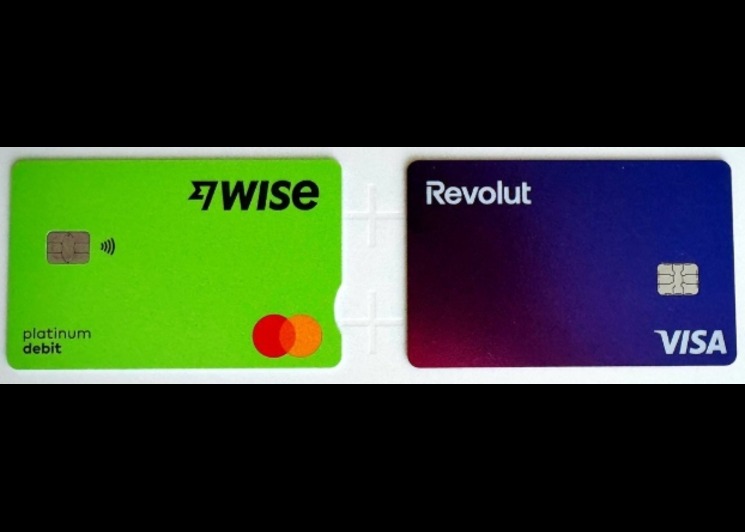What is Bait and Switch Scam And How to Prevent It.

One of the most common deceptive tactics consumers faces is the bait and switch scams. This method lures people with an attractive offer, only to replace it with something different, often more expensive or of lower quality. Understanding what a bait and switch scam is, how it works, and practical ways to protect yourself is crucial for safe shopping online and offline.
Using tools like Bycard virtual prepaid cards can be a modern solution to mitigate risk and give consumers more control over their spending.
- What is Bait and Switch Scam And How to Prevent It.
- Understanding Bait and Switch: The Basics
- Psychological Mechanisms Behind Bait and Switch Scam
- Common Examples of Bait and Switch Scams
- The Legal Landscape: Bait and Switch and False Advertising Laws Worldwide
- Red Flags of a Bait and Switch Scam
- Tools and Methods to Prevent Bait and Switch Scams
- How Bycard Protects You from Bait and Switch Scams
- Where Bait and Switch Scams Happen Most
- The Economic and Trust Impacts of Bait and Switch
- Preventing False Advertising and Staying Ahead of Scams
Understanding Bait and Switch: The Basics
A bait and switch happens when a seller advertises a product or service at a compelling price or with attractive features, but when the consumer tries to buy it, the offer is unavailable or replaced with a different product. This is a classic example of false advertising, one of the most common advertising scams today.
Reports from consumer protection agencies indicate that bait and switch scams affect millions of consumers annually, especially in online marketplaces where anonymity makes deception easier. Retail, real estate, car sales, and subscription services are frequent targets, highlighting how false advertising can span industries.
Psychological Mechanisms Behind Bait and Switch Scam
Bait and switch tactics rely on human psychology to succeed. Scammers exploit behavioural biases such as:
- Sunk Cost Fallacy: Consumers feel committed after investing time or effort, making them more likely to accept the “switch.”
- Fear of Missing Out (FOMO): Urgency cues like “limited stock” pressure consumers into quick decisions.
- Loss Aversion: People prefer avoiding loss to gaining, so they are easily swayed into higher-cost alternatives.
Tools like Bycard virtual prepaid cards allow you to compartmentalize spending, reducing impulsive decisions triggered by these psychological tactics. Each card can be preloaded with a specific budget, limiting potential losses if a scam occurs.
Common Examples of Bait and Switch Scams

Recognizing real-world examples is key to avoiding bait and switch scams:
- Retail: A low-priced item online is suddenly “out of stock,” and a pricier alternative is offered instead.
- Subscription Services: Free trials that automatically enroll users in expensive plans are a form of false advertising.
- Car Sales & Real Estate: Advertised cars or apartments are unavailable, and higher-priced options are pushed.
- Digital & Cyber Variants: Malware disguised as free downloads, phishing links, or software upgrades that trick users, modern bait and switch scams exploit technology and the anonymity of online platforms.
The Legal Landscape: Bait and Switch and False Advertising Laws Worldwide
Bait and switch tactics are illegal in many countries because they constitute false advertising. However, enforcement differs globally:
- United States: The Federal Trade Commission (FTC) enforces laws against deceptive marketing, with companies facing fines or injunctions for advertising scams.
- European Union: Consumer protection directives penalize misleading advertising and require transparent communication.
- Other Jurisdictions: Enforcement may vary, and proving intent, essential for a bait and switch scam case, can be challenging.
Red Flags of a Bait and Switch Scam
Spotting a bait and switch before committing is crucial:
- Ads that seem “too good to be true.”
- Vague terms or missing availability information.
- Pressure tactics or urgency cues.
- Requests for quick payment or personal details.
Pairing vigilance with Bycard virtual cards helps you limit risk because each card can be preloaded with a fixed amount, and unauthorized charges can be blocked in real time

Secure Card for Safe Online Payments!

Tools and Methods to Prevent Bait and Switch Scams
Protecting yourself from bait and switch scams and other advertising scams requires a mix of vigilance, smart habits, and secure payment tools. Here are actionable strategies to keep your money and personal information safe:
- Research the Brand: Check reviews and ratings to detect patterns of false advertising or repeated bait and switch tactics.
- Read the Fine Print: Terms and conditions often reveal substitutions, hidden fees, or limits that could indicate deceptive practices.
- Verify Offers: Contact customer service to confirm product or service availability before committing.
- Use Consumer Tools: Browser extensions, anti-malware software, and ad blockers help reduce exposure to online scams.
- Document Suspicious Offers: Screenshots, emails, and communications serve as evidence if reporting becomes necessary.
- Report Scams: Notify consumer protection agencies or use platform reporting mechanisms to help prevent others from falling victim.
- Secure Payments: Use credit cards or reputable payment services that offer dispute protection. Tools like Bycard virtual prepaid cards give an added layer of security, allowing you to control spending, monitor transactions in real time, and limit exposure to fraudulent offers.
How Bycard Protects You from Bait and Switch Scams

Bycard offers virtual prepaid cards designed to give you control, security, and peace of mind against bait and switch scams and other advertising scams.
Key Features:
- Virtual Prepaid Cards: Load only the funds you plan to spend, limiting exposure to scams.
- Real-Time Monitoring: Track transactions instantly to spot suspicious charges.
- Card-Level Control: Lock/unlock cards and set spending limits for safety.
- Multiple Cards & Budgeting: Separate cards for different purchases help avoid impulsive upsells.
- BIN Diversity & Stability: Bycard uses 30+ trusted BINs across Visa and Mastercard networks, ensuring payment continuity, reducing declines, and improving reliability for online transactions and advertising campaigns.
- Multi-Currency Support: Ideal for international payments, reducing hidden fees.
- Regulated & Trusted: Licensed MSB under FinCEN, providing secure payment oversight.
Why It Matters:
- Limits financial risk if an offer is switched or unavailable.
- Helps resist pressure tactics and manage budgets effectively.
- Protects your main bank account from unauthorized charges.
- Businesses can safely manage ad spend and subscriptions, reducing fraud risk.
Bycard makes payments safer, giving both consumers and businesses a practical tool to prevent losses from false advertising and bait and switch scams.
Where Bait and Switch Scams Happen Most
Bait and switch scams appear across multiple industries:
- Retail & E-commerce: Inflated prices, misleading images, and low-stock claims.
- SaaS & Subscription Services: Free offers leading to costly plans.
- Travel & Hospitality: Promised deals replaced with higher-cost packages.
- Financial Services: Teaser rates that change after enrolment are borderline false advertising.
Understanding industry patterns helps you anticipate where advertising scams are likely to occur.
The Economic and Trust Impacts of Bait and Switch
Bait and switch scams have consequences beyond individual financial loss:
- Consumers waste time and money pursuing unavailable offers.
- Brands risk losing credibility and customer trust.
- Economies face inefficiencies due to advertising scams undermining fair market practices.
Data from regulatory agencies suggests that false advertising complaints constitute a significant portion of consumer protection cases, highlighting the scale of the problem.
Preventing False Advertising and Staying Ahead of Scams

Legitimate businesses can avoid false advertising or bait and switch accusations by ensuring offers are genuinely available, using clear messaging, honoring prices, and training marketing teams on ethical practices.
At the same time, advertising scams are evolving. AI-generated ads, deepfakes, and augmented reality shopping could make offers more deceptive. Consumers can stay protected by using secure payment solutions like Bycard virtual prepaid cards, which provide spending control, real-time monitoring, and protection against misleading online transactions.
Conclusion
Avoiding a bait and switch scam requires awareness, vigilance, and practical tools. Consumers can protect themselves by spotting red flags, verifying offers, using secure payment solutions, and reporting suspicious activity.
Bycard virtual prepaid cards provide an additional layer of security, allowing you to control your spending, minimize exposure to advertising scams, and confidently navigate both online and offline purchases. With the right strategies and tools, you can shop safely, protect your funds, and enjoy peace of mind in today’s marketplace.







